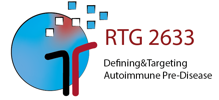MD A13: Investigation of the local and systemic complement activation in bullous pemphigoid patients
Bullous pemphigoid (BP), the by far most frequent autoimmune subepidermal blistering disorder, is characterized by the deposition of autoantibodies against BP180 (type XVII collagen; Col17) and BP230 as well as complement components at the dermal-epidermal junction (DEJ). Of note, the vast majority of BP patients exhibit C3c deposition along the DEJ, suggesting that complement-dependent pathway activation contributes to lesion formation. In fact, the detection of C3 by direct immunofluorescence (IF) microscopy of perilesional skin is a highly valuable diagnostic marker of all pemphigoid diseases (PDs). Treatment of BP is still based on long-term use of systemic or topical corticosteroids that are associated with a high number of relapses and considerable adverse effects. Among the innovative treatment concepts, targeting complement activation appears to be an attractive approach based on the data obtained in mouse models of PDs. While ample data are available about the relevance of complement activation in various mouse models of PDs, studies on complement activation in BP patients are scarce and the mechanisms of complement activation are incompletely understood. The aim of this study is to provide a detailed picture of local and systemic complement activation in BP patients. In addition to delineating the complex network of complement activation in BP skin, we are also interested in studying the systemic complement activation. Comparisons will be made with site-, age-, and sex-matched controls. Results of this study will help to better understand if the pathogenic relevance of complement activation in BP occurs in the skin, circulation, or both.

- Projects
- 1st Generation
- A: Defining Autoimmune Pre-Disease
- B: Targeting of Autoimmune Pre-Disease
- Associated projects
- Medical doctoral researcher projects
- Concluded projects
- Doctoral researchers
- Medical doctoral researchers
- MD A1: Investigation of the influence of specific CDK inhibitors on neutrophil activation
- MD A2: Anatomical expression of target antigens in autoimmune blistering dermatoses as markers for lesion formation
- MD A3: Structural characterization of skin-directed autoantibodies and their interaction with the antigen to gain insights into autoimmune pre-disease
- MD A4: Do interactions between AT1R autoantibodies derived from patients with systemic sclerosis and endothelial cells lead to endothelial dysfunction?
- MD A5: Establishing a human 3D skin model for pemphigus vulgaris
- MD A6: Assessing vasculopathy in systemic sclerosis using optical coherence tomography
- MD A7: Identification of autoantibodies contributing to the break of immunotolerance in immunization induced mucous membrane pemphigus mouse model
- MD A8: Impact of angiotensin II type 1 receptor antibodies on endothelial dysfunction in systemic sclerosis
- MD A9: Impact of glycosylation on IgG4-induced signaling in neutrophils
- MD A10: Testing a new single chain variable fragment for pemphigus foliaceus in the human skin organ culture model
- MD A11: Impact of glycosylation on IgG3-induced signaling in neutrophiles
- MD A12: Screening for inhibitors to prevent keratinocyte dissociation
- MD A13: Investigation of the local and systemic complement activation in bullous pemphigoid patients
- MD A14: Impact of different IgG subclasses and glycosylation patterns on immune complex-induced signaling in neutrophils
- MD A15: Novel target antigens of the lower basal membrane zone as inducers of autoimmunity of bullous autoimmune dermatoses
- MD A16: Identification of the major epitope of the BP180 ectodomain recognized by serum IgA autoantibodies of patients with pemphigoid diseases – IgA autoantibodies as prognostic marker?
- MD A17: Autoantibody-mediated effects on endothelial and immune cell signaling in systemic sclerosis
- MD A18: Molecular and cellular characterization of pre-autoimmune effects induced by aging in mice
- MD A19: Immunogenic effects of Staphylococcus aureus toxins in autoimmune vasculitis
- MD B1: Testing the effect of kinase inhibitors in the human skin organ culture model for pemphigus vulgaris
- MD B2: Investigation of cigarette smoking-induced autoantibodies against human airway epithelial cells in patients with chronic obstructive lung disease
- MD B3: Contribution of taurine, pyridoxine and pantothenic acid to the pathomechanism of pemphigus vulgaris
- MD B4: The influence of prednisolone treatment on split formation in the human skin organ culture model for pemphigus vulgaris
- MD B5: Molecular characterization of the pre-autoimmune effects of Western diet in healthy mice
- MD B6: Testing established MAP kinase inhibitors in a different approach of the human skin organ culture model for pemphigus vulgaris
- MD B7: Testing the effect of kinase inhibitors in the human skin organ culture model for pemphigus foliaceus
- Ass. doctoral researchers
- Ass. medical doctoral researchers
- 2nd Generation
- 1st Generation






